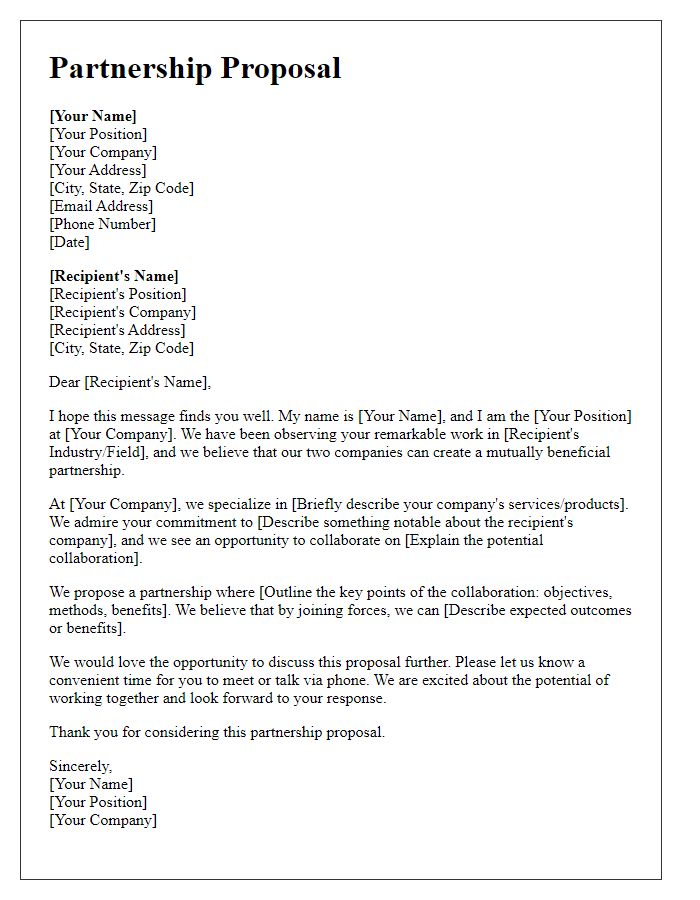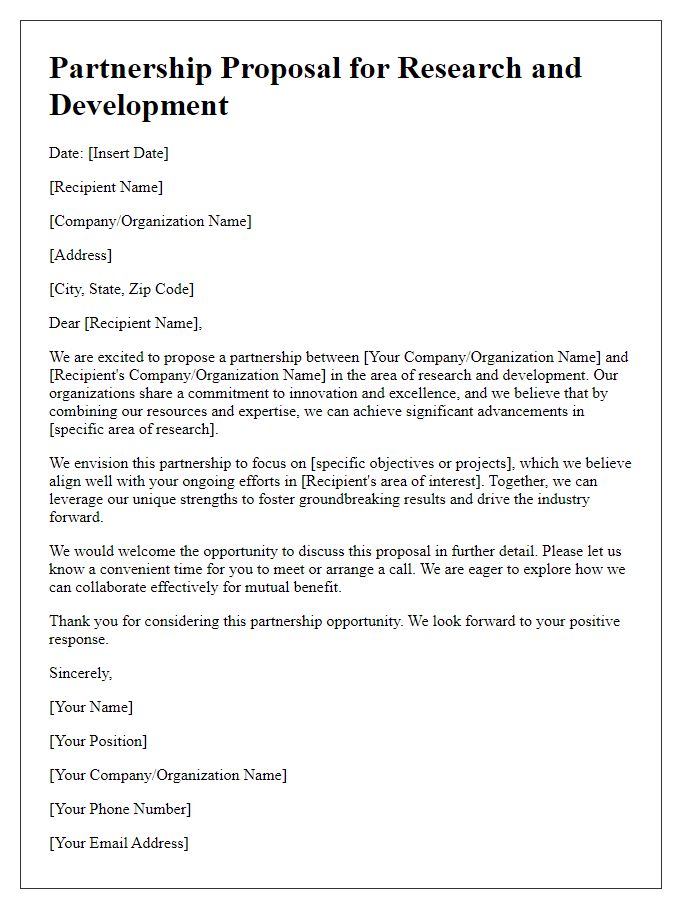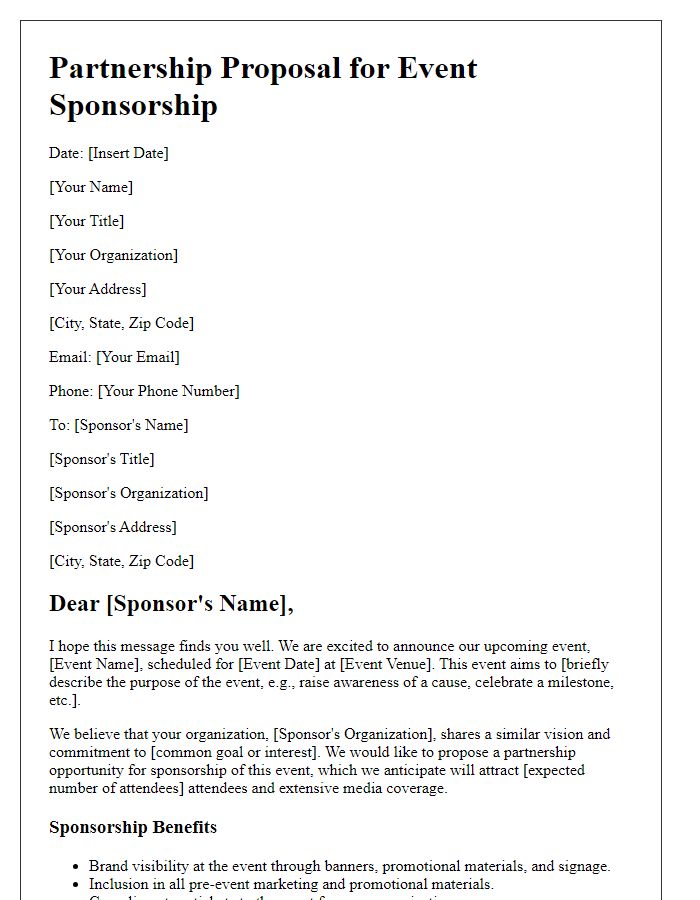Are you looking to craft the perfect letter for a partnership proposal? A well-structured proposal letter can open doors to collaboration and exciting opportunities. In this article, we'll explore key elements to include in your letter, ensuring it stands out and resonates with your potential partners. So, grab a cup of coffee and let's dive into the essentials that will help you make a lasting impression!

Clear Introduction
A partnership proposal outlines the intent to collaborate, presenting mutual benefits to interested parties. A successful introduction typically includes a brief description of each organization's mission, relevant experience, and the overarching goal of the partnership. For example, an environmental nonprofit may describe its dedication to conservation efforts, emphasizing its successful reforestation project that planted over 50,000 trees across various ecosystems. A tech company could present its innovations in sustainable technologies that contributed to reducing carbon emissions by 30% in urban areas. Together, these entities could pursue initiatives aimed at enhancing environmental stewardship and driving community engagement in sustainability practices. Clear articulation of shared values lays the foundation for a productive partnership opening dialogue for potential collaboration.
Value Proposition
A well-crafted value proposition for a partnership proposal emphasizes mutual benefits and strategic alignment. For instance, a technology firm specializing in artificial intelligence can approach a healthcare provider to propose a collaboration aimed at enhancing patient care. The partnership could leverage AI algorithms to analyze vast datasets, improving diagnostic accuracy and personalized treatment plans. The healthcare provider, with its extensive patient database, offers valuable insights crucial for developing tailored AI solutions. This collaboration could lead to innovative healthcare practices, reducing operational costs and elevating patient outcomes. By integrating cutting-edge technology into healthcare, both entities can establish a competitive advantage in their respective markets.
Detailed Proposal Outline
A detailed proposal outline for a partnership submission includes essential elements that highlight the project's objectives and benefits. Title page featuring the project name, date, and involved parties. Executive summary providing a concise overview of the proposal and its potential impact. Background information explaining the context of the partnership including relevant market research and historical data. Goals and objectives clearly stating the desired outcomes, such as increased market share or improved community engagement. Proposed strategies outlining specific actions and methods to achieve the objectives, along with timelines. Evaluation metrics detailing how success will be measured, including key performance indicators (KPIs). Budget overview presenting the financial aspects including funding sources and projected expenses. Conclusion summarizing the potential benefits of the partnership and a call to action encouraging the recipient to proceed with discussions. Appendix containing supporting documents, graphs, and additional research relevant to the proposal for comprehensive understanding.
Mutual Benefits
A strategic partnership proposal outlines the potential for mutual benefits between two organizations, enhancing growth and success. Collaborative ventures can yield increased market reach, as companies leverage each other's strengths and customer bases. For instance, combining technology expertise from a software company with the extensive distribution network of a consumer goods brand can facilitate innovative product launches. Shared resources such as marketing budgets and research capabilities can reduce costs significantly, potentially increasing profit margins by up to 20%. Access to a diverse talent pool fosters creativity and accelerates problem-solving, enabling both parties to adapt more swiftly to market changes. Furthermore, enhanced brand credibility, achieved through association with trusted partners, can lead to increased consumer confidence and loyalty, ultimately driving sales.
Call to Action
A partnership proposal outlines mutual benefits for collaborating entities, fostering growth and innovation. By establishing clear objectives, such as revenue growth, enhanced market reach, and resource sharing, both parties can achieve strategic goals more effectively. Data-driven insights reveal that 70% of partnerships lead to increased efficiency and innovation. Potential partners should assess alignment in vision, values, and market presence to optimize synergy. Locations such as Silicon Valley and London host numerous successful collaborations, emphasizing the importance of networking and relationship building. Consider proposing a pilot project or joint venture to showcase the benefits of collaboration, paving the way for long-term success.













Comments